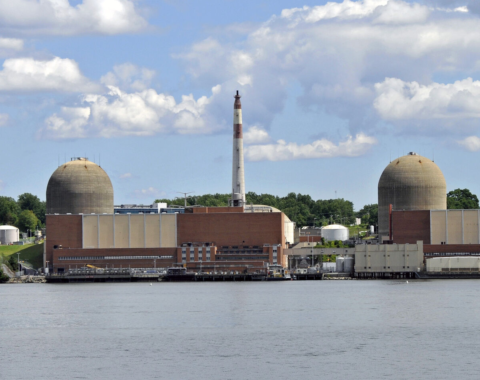Looks like Pennsylvania will be joining California, Connecticut, Delaware, Maine, Maryland, Massachusetts, New Hampshire, New Jersey, New York, Rhode Island, Vermont, and Virginia in the greenhouse gas consortium – RGGI (Regional Greenhouse Gas Initiative) – to adopt a carbon pricing policy that sets a price and declining limits on carbon dioxide emission from power plants.
The plan won a 3-2 party-line vote from Pennsylvania’s Independent Regulatory Review Commission, a five-member panel of gubernatorial and legislative appointees. The commission voted after almost six hours of testimony and nearly two years of Governor Tom Wolf’s administration working on the regulation and shepherding it through the long regulatory process. This action makes Pennsylvania the first major fossil fuel state to adopt a carbon pricing policy.
Wolf’s administration had initially sought support for the plan with the PA Legislature, but they failed to get traction there, so they pursued the matter through regulation. Since Pennsylvania is the nation’s #2 natural gas state and the #3 coal-mining state – opponents were numerous – including coal and natural gas interest that will have to pay more to operate, industrial and business groups that fear the result will be higher electricity bills, and labor unions – whose workers maintain the power plants, build gas pipelines and mine coal – that fear it will result in a loss of jobs. One of the chief arguments against the plan was that it will result in fossil fuel generation being more expensive and result in sending power generation to neighboring states that have no emissions caps and devastate Pennsylvania’s local coal-mining jobs and economies.
The heavily populated and fossil fuel-rich Pennsylvania has long been one of the nation’s biggest polluters and power producers and the jury is still out on whether or not a carbon-pricing program will significantly reduce greenhouse gas emissions. Its effectiveness will depend on how the emissions caps are set and how the money from the emissions credits is spent – proponents expect the money to be spent on clean energy and energy efficiency programs.
The regulation will most likely take several months to be officially published and become final, but the Governor wants it to take effect in 2022. However, a legal challenge to the plan is expected and even the PA legislature may try to muster veto-proof majorities to block its passage.
In theory, its passage will make electrical generation from solar, wind, and nuclear more cost-competitive in electricity markets. In fact, in some cases, the plan received support from backers of higher-efficiency natural gas plants and labor unions involved in renewable energy projects. It also motivated the Ohio-based owner of nuclear-powered Beaver Valley Power Station to put off plans to close the plant.
Coal advocates say the plan will prematurely shut down coal mines and coal-fired power plants in Pennsylvania. Opponents of the plan say that people are “terrified” of what carbon-pricing will do to their community and have called it an assault on a particular industry just to benefit other industries – government once again deciding on what companies will be allowed to flourish.



